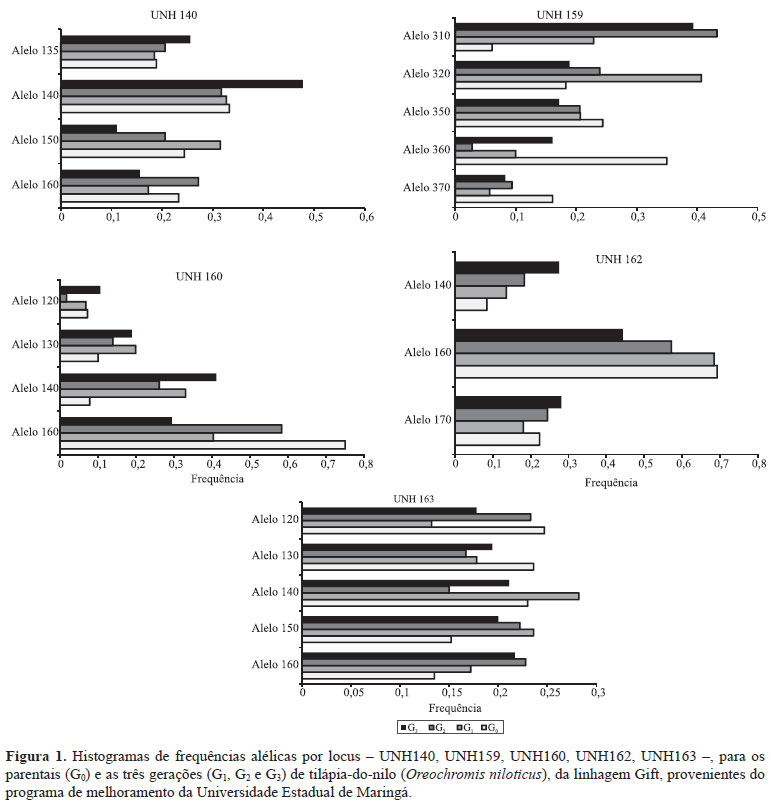The objective of this work was to characterize the genetic variability in parental (G0) and three subsequent generations (G1, G2, and G3) of genetically improved farmed tilapia (Gift) using microsatellite markers. Three hundred sixty individuals from the breeding program of Universidade Estadual de Maringá, PR, Brazil, were selected for weight gain. A total of 21 alleles was found in all five polymorphic microsatellite loci (G12292, UNH140; G12311, UNH159; G12312, UNH160; G12314, UNH162; and G12315, UNH163), with an average number between three and five alleles per locus. Allele frequencies ranged from 0.017 (UNH160 - G2) to 0.750 (UNH160 - G0). The average observed heterozygosity was 0.501, 0.391, 0.531, and 0.503 for G0, G1, G2, and G3, respectively. The average inbreeding coefficient was 0.192 (G0), 0.401 (G1), 0.230 (G2), and 0.301 (G3). All generations showed deviation from Hardy-Weinberg equilibrium, with linkage disequilibrium in most loci. Except for G1, the heterozygosity was maintained in the G2 and G3 generations, which indicates that there is no significant loss of genetic variability in the breeding program.
Oreochromis niloticus; inbreeding coefficient; allele frequency; tilapia farming; genetic variability






